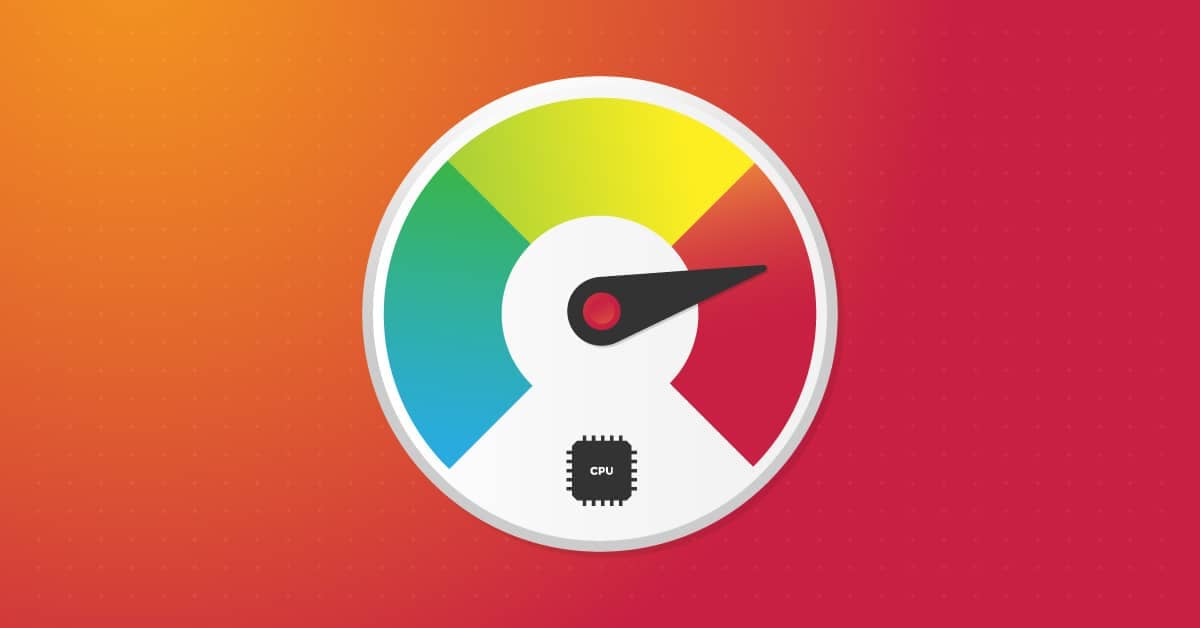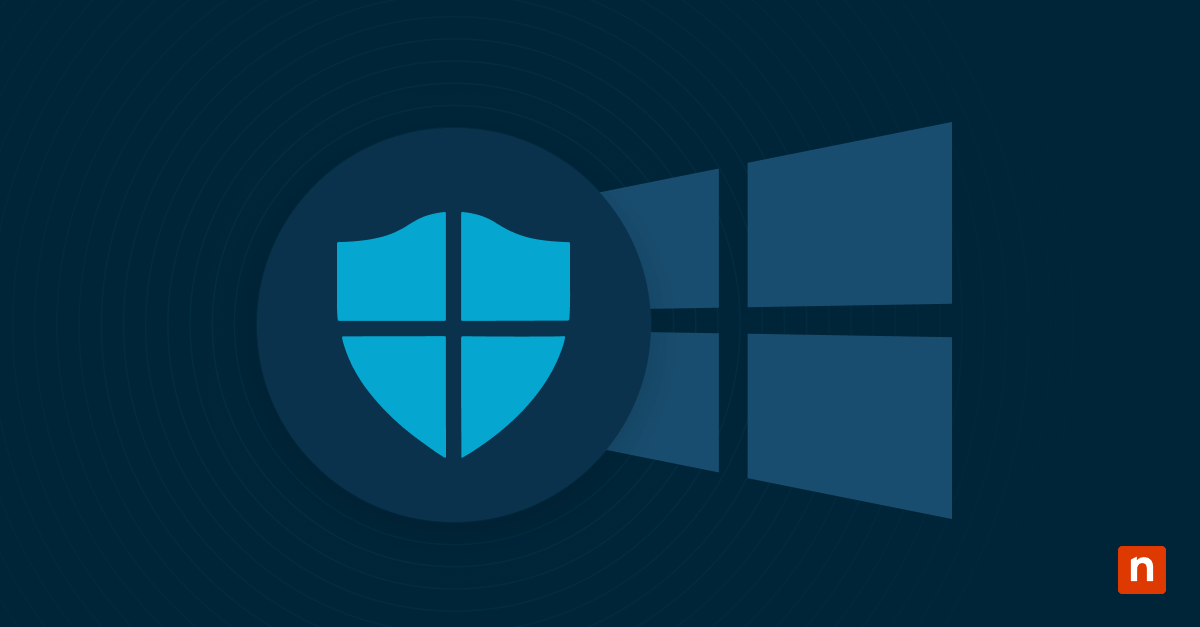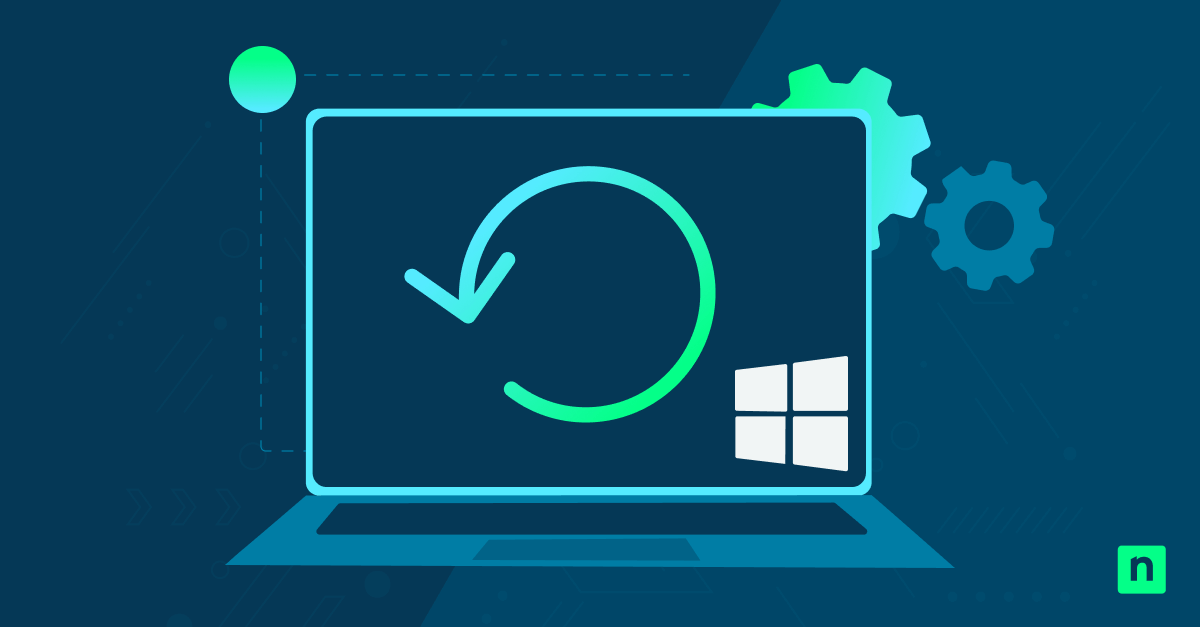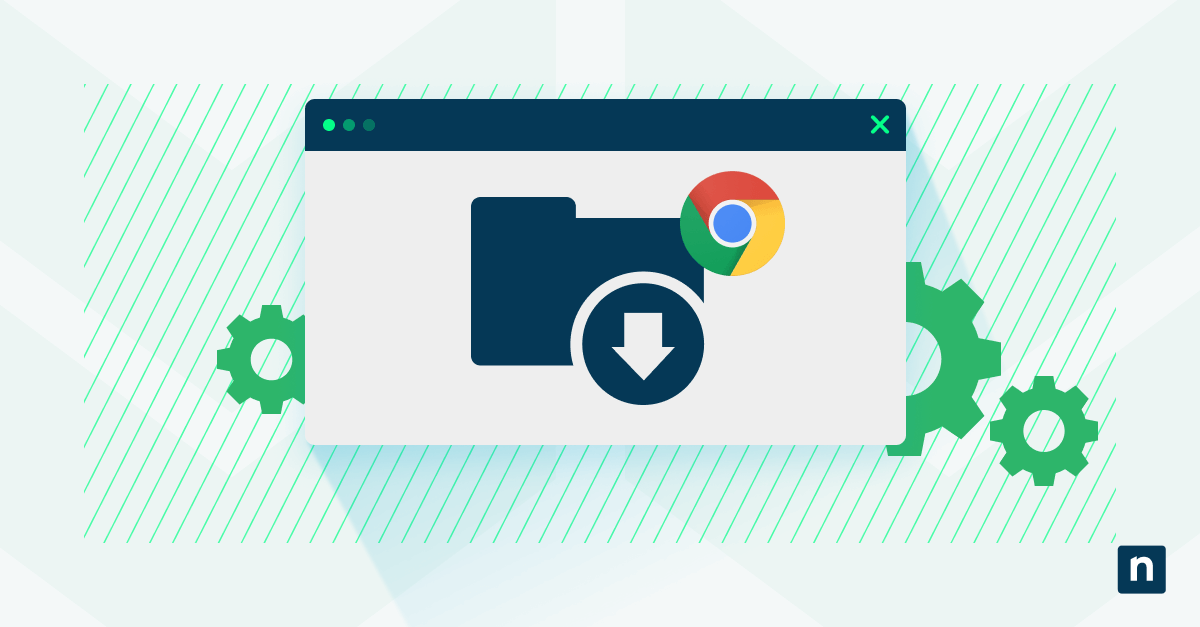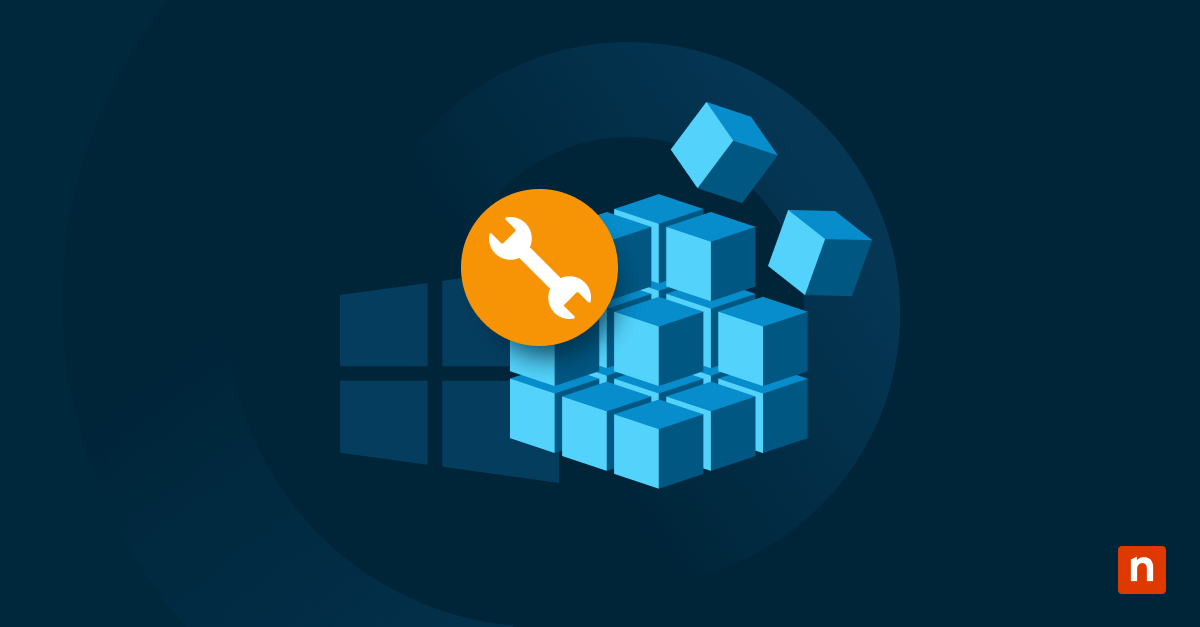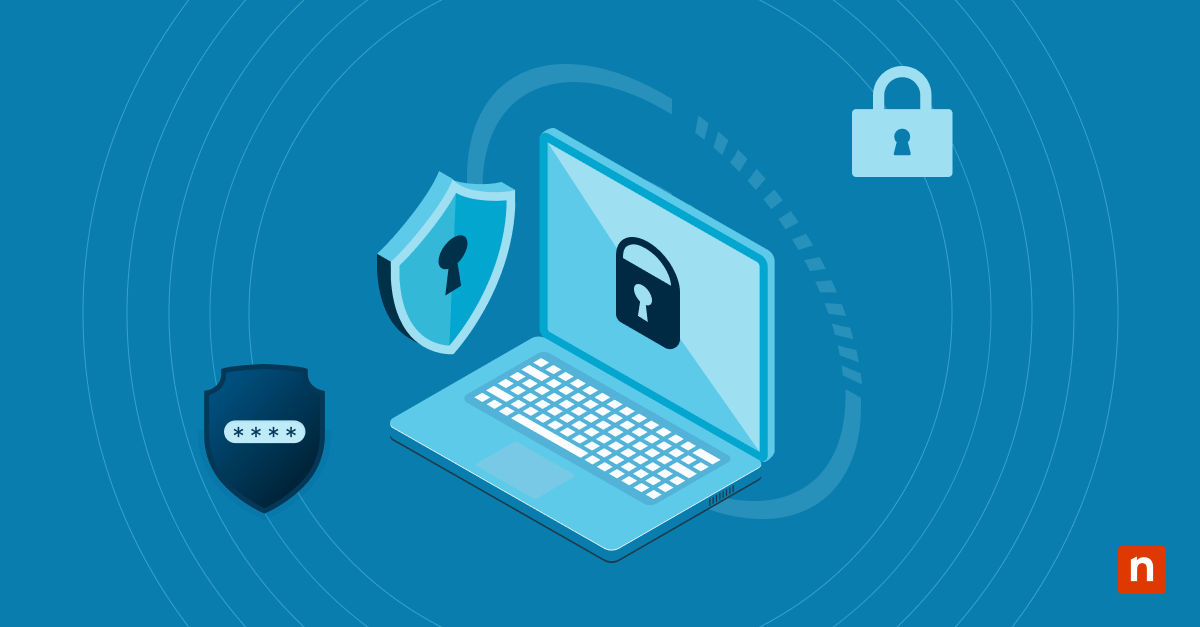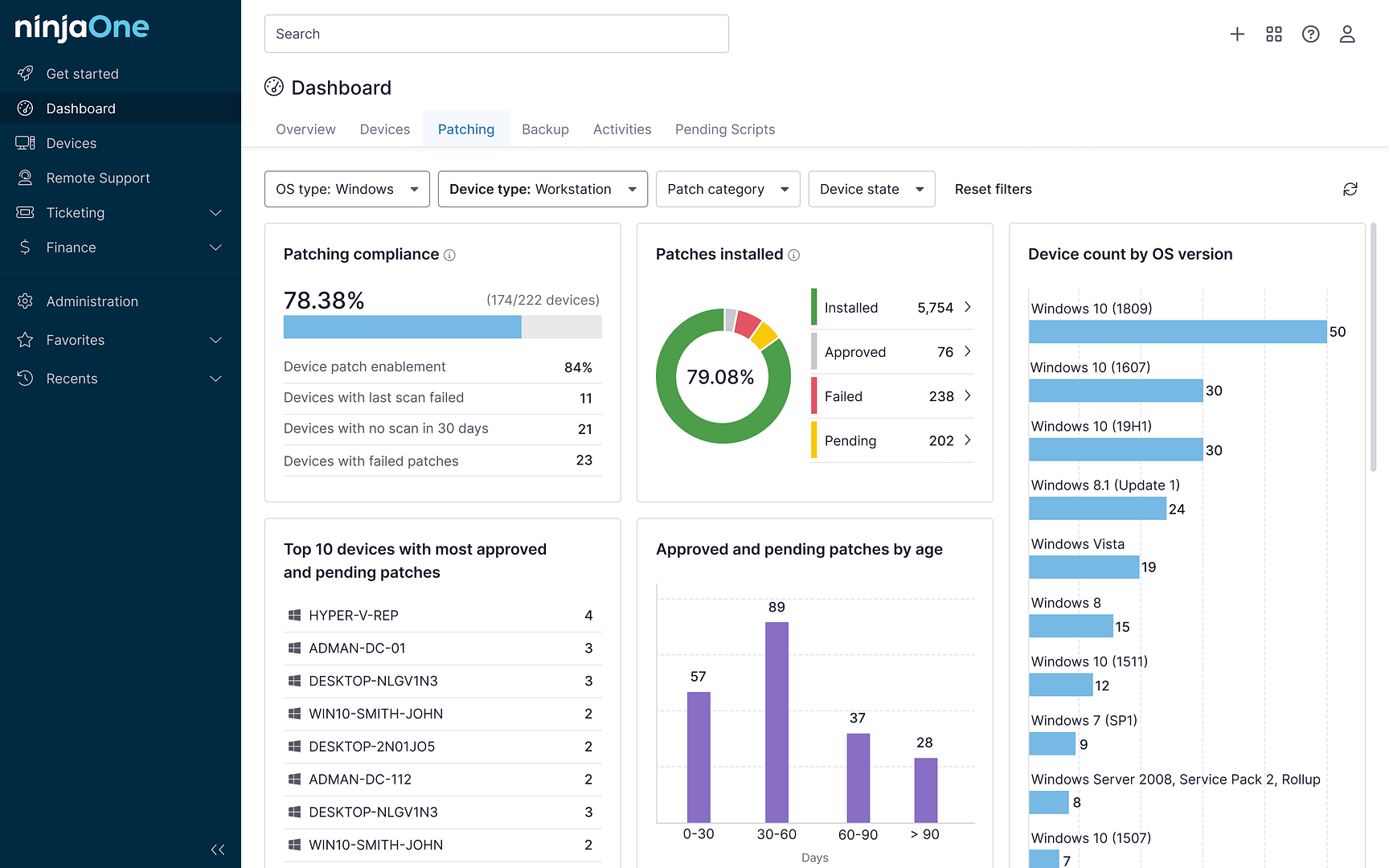The world of business has seen a rise in remote work setups and hybrid workforces, leading to an increase in unconfined device controllership. To mitigate risks that may arise from this situation, enhancements to portable device management were developed. As mobile technology advanced, enterprise mobility management (EMM) emerged out of necessity from large-scale organizations.
Today, EMM gives you a comprehensive approach to managing the various usage and security aspects of mobile devices in the workplace.
What is enterprise mobility management (EMM)?
Enterprise mobility management (EMM) is a comprehensive framework for managing and securing mobile devices, applications and data used by your employees. EMM software provides tools that allow your IT department to control, monitor and support mobile devices within your organization. It addresses your need for secure access to corporate resources from mobile devices while ensuring sensitive information stays protected.
With NinjaOne Enterprise Mobility Management solution, you can take control of your managed mobile device effectively.
The evolution of enterprise mobility management
When mobile devices first made their way into the workplace decades ago, mobile device management (MDM) provided needed functionalities in device administration. MDM platforms focused mainly on essential tools that helped with device settings configuration, security policy enforcement, and remote device lock/wipe, among other things.
However, as mobile device technology advanced, MDM functionalities also needed to expand. The rapid growth in the prevalence of mobile apps prompted the development of mobile application management (MAM). This allows organizations and IT administrators to control access to corporate apps and data.
While MDM and MAM may seem enough then, the increasing use of mobile devices for work purposes and the adoption of Bring Your Own Device (BYOD) policies have highlighted the need for a more comprehensive approach to portable device management. Enterprise mobility management, or EMM, is a product of the evolving mobile device management expansion. EMM is developed as a more nuanced strategy to complement other mobile device management tools that came before it. EMM solutions help organizations and IT teams manage this diversity by enforcing security policies, ensuring compliance, and protecting corporate data from unauthorized access and breaches.
EMM software has a wide range of functionalities that lets your IT department maintain control over mobile devices while granting employees access to the necessary tools and data to perform their tasks effectively.
EMM vs MDM
Mobile device management and enterprise mobility management are both mobile device management solutions that differ in scope but have overlapping functionalities.
MDM mainly focuses on device-level control and security capabilities. These capabilities include remote wiping, device configuration, password enforcement, and more. In contrast, enterprise mobility management extends beyond device management, incorporating advanced solutions such as enterprise MDM, mobile content management (MCM), mobile application management (MAM), and more.
Uncover key differences between MDM and MAM.
Key components of enterprise mobility management
Enterprise mobility management encompasses several key components that collectively provide secure and efficient use of mobile devices within your organization.
Device management
Device management is the foundation of EMM and covers the deployment, configuration and monitoring of mobile devices within your organization. It ensures that your devices comply with corporate policies and security standards. Your IT administrators use mobile device management (MDM) tools to enforce security measures such as password policies, encryption and remote wipe capabilities.
Application management
Mobile application management (MAM) focuses on managing and securing applications running on your mobile devices. You can control which applications can be installed and used on corporate devices.
MAM lets you enforce app-specific security policies, such as restricting data sharing between applications. It also supports deploying of corporate apps, giving you access to the necessary tools without compromising security.
Security management
Security management includes implementing identity and access management (IAM) solutions that control how, when and where you can access corporate resources. It also includes features like multi-factor authentication (MFA), single sign-on (SSO) and role-based access control (RBAC).
Content management
Mobile content management (MCM) focuses on controlling access to and distribution of corporate data on your mobile devices. It lets your IT administrators specify which applications can access or transmit corporate data and keeps your sensitive information secure.
MCM solutions support secure document sharing, editing and collaboration your teams to work efficiently while maintaining data security.
Enterprise mobility management for IT departments
Enterprise mobility management (EMM) equips your IT department with tools and frameworks to manage and secure mobile devices, applications, and data. EMM solutions provide a centralized platform for your IT administrators to oversee the entire mobile ecosystem, ensuring control over the devices used within your organization. This saves time, increases visibility, reduces costs, and makes IT operations more efficient and effective.
Benefits of implementing EMM
Here are some of the benefits of EMM:
- Enhanced security: Large organizations require stricter security strategies for enterprise mobile device management. EMM software can address this by incorporating features such as encryption, remote lock/wipe capabilities, MFA, and more to protect your sensitive corporate data, – even if a device is lost or stolen.
- Increased productivity: EMM has become a valuable tool in the era of hybrid workforce and remote work setup. Enterprise mobile device management strategies like EMM allow IT administrators to gives employees access to necessary applications and data, regardless of location. Meanwhile, MAM helps with remote application distribution and updating.
- Streamlined IT management: EMM simplifies the management of mobile devices and applications through remote configuration and policy enforcement. Remote workforces and hybrid work setups benefit from this since EMM reduces the need for physical intervention, saving organizations time and administrative overhead.
- Cost savings: EMM helps you reduce operational costs by automating IT management tasks such as device provisioning, software updates, security enforcement, and policy compliance. Its remote capabilities also minimizes downtime and on-site IT support costs
- Improved compliance: EMM provides tools to enforce security policies and monitor compliance with regulatory requirements. Features like IAM and data encryption keep your corporate data handling within industry standards.
- Better user experience: EMM improves the user experience by providing seamless access to necessary applications and data. It simplifies onboarding with automated device enrollment and configuration, making it easier for your employees to get started.
Boost security, streamline IT operations, and improve compliance with NinjaOne’s Enterprise Mobility Management.
Challenges in enterprise mobility management
Leveraging enterprise management tools like EMM software is an effective way to implement security and control over managed mobile devices. However, mobile enterprise platforms used in EMM enforcement are also susceptible to operational complexities. Here are some challenges tied to enterprise mobility management.
Shadow IT
Shadow IT is the practice of using unsanctioned devices and applications. This entails using personal devices for work or unauthorized downloading and installation of software or applications that weren’t reviewed or authorized by IT administrators. Shadow IT practices pose risks to an organization’s security posture since unapproved assets are not monitored by an EMM, making them a potential catalyst for data breaches and other security threats.
User resistance
Some users may see EMM implementation as an invasion of privacy, which could lead to resistance to having their devices monitored, especially in BYOD environments. This is where employee training becomes necessary to ensure employees have a complete understanding of how EMM works, which data are being collected and monitored, and why EMM is a valuable tool in enhancing everyone’s protection from sophisticated security threats.
Mobile technology evolution
The rapid evolution of mobile technology may affect the implementation of enterprise management tools. This warrants mobile enterprise platforms like EMM to keep up with the ever-changing landscape of mobile technology and its advancements. This can be a challenge for some organizations as they must continuously adapt their security policies, integration strategies, and compliance measures to ensure seamless functionality and data protection.
Learning curve and integration
Getting used to a new system in instances, such as when moving from an enterprise MDM solution to a full-pledged EMM tool, may cause user adoption challenges. Training people requires time, which may impact productivity. Additionally, integrating a new mobile enterprise platform with existing IT infrastructure can also have complexities that must be addressed.
Cyberattacks
While enterprise mobile device management platforms like an EMM are designed to enhance security, they are not immune to cyber threats. Social engineering practices may exploit human vulnerabilities through email phishing and other infiltration tactics. Mobile device users with impaired judgment may fall victim to social engineering, allowing attackers to bypass security policies set by EMM solutions.
EMM best practices
Effectively implementing enterprise mobility management requires adherence to best practices for security, efficiency and user satisfaction. Enterprise management tools like EMM are only effective if implemented properly. Here are some EMM best practices to help you leverage EMM tools to their full potential:
Develop a comprehensive EMM policy
To develop a comprehensive EMM policy you need to define clear objectives for your strategy, including security goals, compliance requirements and productivity enhancements. Include the following in your policy:
- BYOD policies
- Data access and security protocols
- Detailed usage guidelines that cover acceptable use of mobile devices, applications and data
Regularly update and patch software
Regularly updating and patching software is important for maintaining security and performance. Use EMM tools to automate the distribution of software updates and security patches, ensure all your devices run the latest versions and reduce vulnerabilities. Continuously monitoring devices lets you stay compliant with updated policies and promptly address non-compliant devices.
Train employees on EMM policies
Conduct regular training sessions to educate employees on the importance of EMM policies, how to use the provided tools and EMM best practices for maintaining security. Provide accessible resources and ongoing support to help your employees adhere to these policies and resolve any issues they encounter.
Boost security, streamline IT operations, and improve compliance with NinjaOne’s Enterprise Mobility Management.
Future trends in enterprise mobility management
Future trends in enterprise mobility management will be shaped by advancements in artificial intelligence (AI) and machine learning (ML). These technologies will enhance your predictive analytics and automation capabilities. AI and ML can improve threat detection and response times, making your EMM systems more proactive in managing security threats.
5G technology will also impact your EMM by providing faster and more reliable connectivity, enabling more seamless mobile experiences and the integration of Internet of Things (IoT) devices into your enterprise networks. The focus on Zero Trust security models will also intensify, ensuring that all your devices and users are continuously authenticated and monitored to protect against evolving cyber threats.
Mobile technology is an essential part of your business. EMM helps you balance the benefits of mobility with the need for security and compliance, ultimately supporting a more flexible and productive workforce.
Enterprise mobility management with NinjaOne
In today’s evolving mobile device technology, organizations need a robust mobility management solution. NinjaOne EMM platform offers essential functionalities that can provide comprehensive visibility into your device fleet, automate routine tasks, and enforce robust data protection. Enhance your mobile device management, streamline operations, and ensure the security of your organization’s mobile infrastructure. Discover how NinjaOne can transform your mobile device management today.


